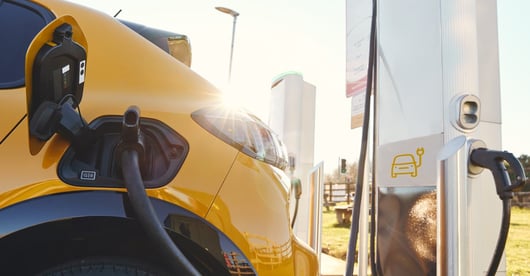Electrical Safety in Charging Stations
Electric vehicles are the key to disrupting the global transportation status quo while avoiding carbon emissions and addressing the climate emergency. The deployment of the charging network is essential for the ultimate market adoption of electrical vehicles for sustainable development of a new automotive industry.
When we talk about charging stations for electric vehicles, we usually refer to their power, mode, charging management, communication, and charging time, but do we know which devices are needed to ensure electrical safety? The development of different technologies and the growth of the charging infrastructure are subject to the appearance of new challenges in the field of electrical safety. At Bender, we offer specialized solutions for each charging mode, as defined in IEC 61851-1:2019.
Measuring 6mA in DC current
Electrical vehicle charging in AC, modes 2 and 3, involves the coupling of a DC system (vehicle) to an AC system (charging station). According to the general requirements, the charging station must have a residual current device (RCD) of type A as a protection element against residual currents in alternating current and pulse current. However, the presence of a DC system creates the possibility of a DC fault. In the event of an insulation fault appearing in the vehicle, the chances of DC faults greater than 6mA are increased. In this case, the response value as well as the response time of the RCD may be affected and, in the worst case, a type A RCD may fail to trip. If this happens, electrical safety is not guaranteed. This is where Bender technology is vital. Bender devices provide electrical safety by means of type B RCDs capable of detecting AC, pulsating and DC current faults.
Insulation monitoring
One of the challenges in the electrical vehicle charging system is the reduction of the charging time. For this, it is necessary to change the method and use DC charging, defined as mode 4 in IEC 61851-1:2019. DC charging makes it possible to reduce the recharging time to one hour, or even 30 minutes, depending on the power level at which it is used.
DC charging stations respond to an isolated or ungrounded (IT) system, where no active point of the system is directly connected to the ground. According to the requirements for these systems, the protection element to be installed is an insulation monitoring device (IMD). This device continuously measures the insulation resistance and alerts the user in the event of a fault. Bender offers insulation monitoring devices that actively monitor the insulation resistance between the active HV components of an electrical drive system, and the reference ground (vehicle's chassis).
What happens when we couple two ungrounded systems?
Another challenge present in charging mode 4 is the coupling of two ungrounded systems, the electric vehicle and the DC charging station. In this case, the vehicle isolation monitor must be deactivated during the charging process, so as not to interfere with the charging station monitor. Bender has the technology for communication between the vehicle's safety systems and the charging station.
For more information about this application or to learn more about Bender technology related to your specific application, contact our team of experts.



